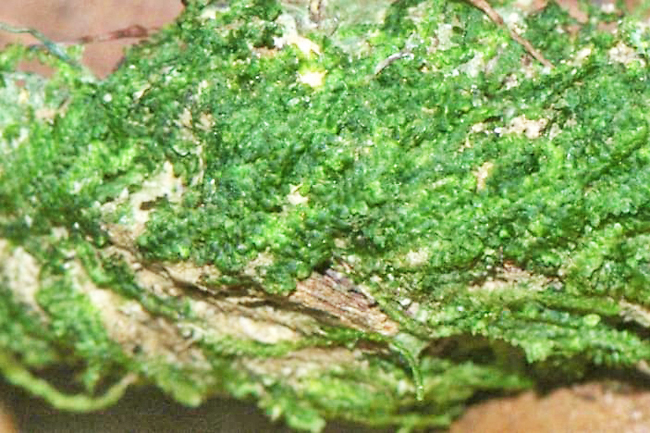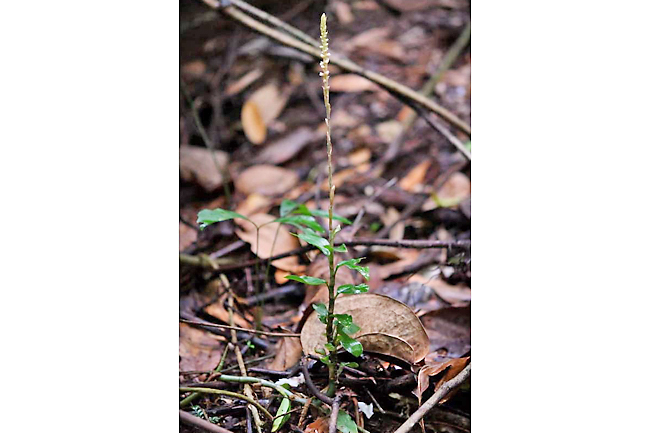Davina Tham
SINGAPORE (CNA) – A small ground orchid that was presumed extinct in Singapore and a species of liverwort that is “new to science” were among the botanical discoveries recorded in the country in 2021, the National Parks Board (NParks) said on January 10.
A total of nine such plant, fungal and algal discoveries were recorded last year: One new species, five new records of species that have not previously been seen in Singapore, and three rediscoveries of species that have not been seen or collected for at least 30 years.
More than half of these discoveries were made in Bukit Timah Nature Reserve, said NParks.
A small ground orchid known by the scientific name Hetaeria oblongifolia was among the rediscovered plants.
It was found in Tengah Forest more than 120 years after the last specimen of it was collected by Henry Nicholas Ridley, the first scientific director of the Singapore Botanic
During an environmental baseline study at Tengah Forest in 2020, scientists collected “a patch of herbs that superficially resembled the ornamental Dracaena species”.
“On closer examination, several inflorescences in bloom revealed that these plants belonged to a species of ground orchids,” said NParks.


Specimens were sent to the Herbarium of the Singapore Botanic Gardens, where the plant was identified as Hetaeria oblongifolia.
Previously considered extinct in Singapore, the orchid is now assessed to be critically endangered, as there are “very few plants” left, said NParks.
“As part of efforts to conserve this species, some of the plants have been collected and planted in the Gardens’ orchid nursery, where propagation by rhizome cuttings seems to be effective,” it added.
Tengah Forest is designated for redevelopment in the Urban Redevelopment Authority’s Master Plan, and is set to provide about 42,000 new homes when fully developed.
Apart from Tengah Forest, two other rediscoveries were recorded in 2021 at a reclaimed site in Tuas and at Bukit Timah Nature Reserve.
The new species, Gaolejeunea hoi, is a tiny plant measuring no more than one cm long and one mm wide. A species of liverwort, it grows on tree bases and exposed roots in the forests of Bukit Timah and Nee Soon.
The plant was first collected at Bukit Timah Nature Reserve during a survey of the area from 2015 to 2017.
Initially, researchers were unable to categorise it into any known genera of the Lejeuneaceae family in Singapore, which account for about half of all liverwort species reported in the country, said NParks.
“Upon further research, it was confirmed that this is a new species record to science and a second species in the genus Gaolejuenea that was formerly considered to be endemic to China,” the authority said.
The new liverwort species is currently considered endemic to Singapore, added NParks. It is named after Dr Boon-chuan Ho of the Singapore Botanic Gardens, who collected the first specimens of it.
With the botanical discoveries recorded in 2021, a total of 124 new plant species, new records and rediscoveries in Singapore have been published over the past five years, said NParks.
Minister for National Development Desmond Lee said the discoveries were possible due to in-depth field surveys and taxonomic research led by the Singapore Botanic Gardens, supported by local and international collaborators.
He highlighted the work of the Gardens’ Herbarium, which documents and preserves records of local and regional flora diversity, as well as the Seed Bank and Micropropagation Laboratory, which store and propagate the seeds of plants in the region, including extremely rare native plant species from Singapore.
“These efforts to conserve and continuously update our understanding of the flora diversity in Singapore will help to better inform our conservation strategies to safeguard Singapore’s key habitats and rich biodiversity, thus achieving a more ecologically and climate resilient City in Nature,” Lee said in a Facebook post.






